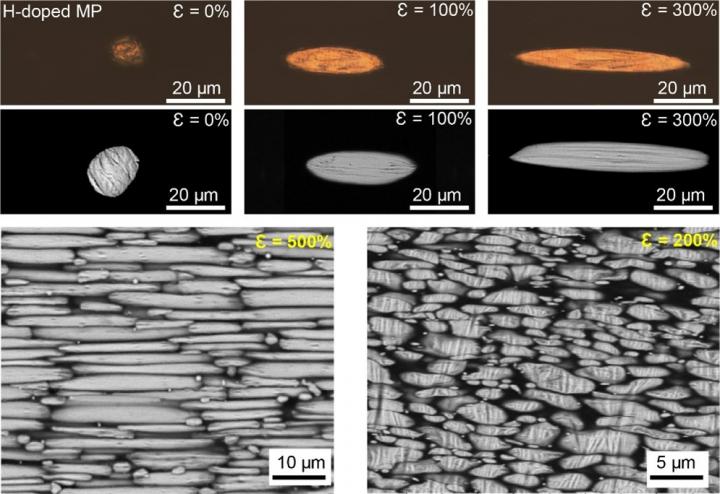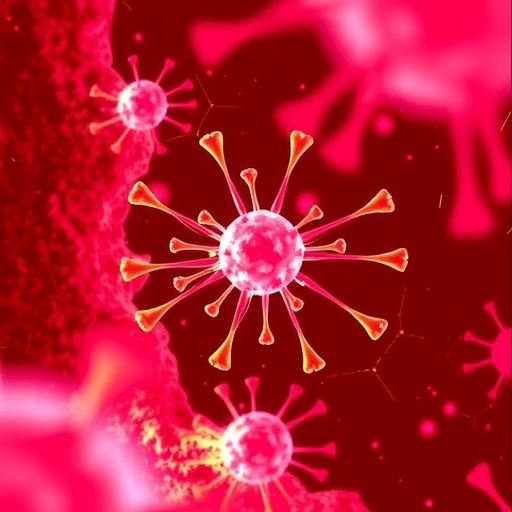
Credit: POSTECH
Today’s electronic devices strive for new form factors – to make them foldable, stretchable, and deformable. To produce such devices that are highly stretchable or deformable, it is necessary to develop electrodes and circuit lines whose electrical properties can withstand harsh deformation or mechanical damage. To this, POSTECH-Yonsei University joint research team has recently developed liquid metal ink to accelerate printed electronic devices that can be changed into any shape.
Professor Unyong Jeong and Dr. Selvaraj Veerapandian of POSTECH’s Department of Materials Science and Engineering, with Professor Aloysius Soon and Dr. Woosun Jang of Yonsei University’s Department of Materials Science and Engineering, have developed liquid metal microparticles with high conductivity and viscoplasticity. These research findings were published in the authoritative international journal Nature Materials on January 4, 2021.
Electronic devices conventionally use electrodes and circuit lines made of hard metals such as gold, silver, or copper. However, such metal substrates crack and lose their electrical conductivity upon external pressure and elongation, making them unfit to use in deformable electronic devices. On the contrary, liquid metals – which flow like a liquid at room temperature and are easily deformable and highly conductive – have attracted great attention for their potential applicability in stretchable circuit lines. However, when these liquid metals are made into ink, an insulating oxide skin forms on the surface that removes their conductivity after being printed.
The joint research team devised a method to convert the oxide film of the liquid metal microparticles into a conductor by doping hydrogen ions into the films. To theoretically verify the conductivity of the oxide film via hydrogen doping, the team used quantum mechanics-based material simulations to confirm that the hydrogen-doped indium oxides or gallium oxides can have similar electrical conductivity to the indium tin oxide (ITO) electrodes currently being utilized in transparent electrodes. The researchers additionally confirmed that the hydrogen-doped oxide film with polymer adsorption to the surface had viscoplasticity that could withstand about 300% elongation strain without breakage.
This new liquid metal ink containing the hydrogen-doped liquid metal microparticles allowed direct printing of 3D circuit lines on various stretchable substrates. Since the microparticles could change the shape upon deformation while maintaining high conductivity, the printed electrodes and circuit lines displayed negligible change in resistance even when stretched over 500% and maintained electrical properties even in harsh environments like high humidity, high temperatures or severe mechanical damage. This innovative technology is anticipated to enable the development of next-generation stretchable devices.
“Such high viscoplasticity of metal oxides have never been studied so far,” remarked Professor Aloysius Soon of Yonsei University. “What began as a study on viscoplasticity of conductive oxide-skin has opened up the possibilities of developing ductile metal oxides of semiconductors and insulators.”
POSTECH’s research team led by Professor Unyong Jeong is working toward commercialization of highly stretchable circuits using the newly developed ink and printing technology. Since their liquid metal ink allows to use traditional printing methods for fabrication of complex 3D circuits without leakage current, the new ink is projected to be highly applicable in other industries like robotics, electronic skins, and wearable devices through 3D printing.
“The ultimate goal of this research is to develop stretchable and foldable 3D electronic devices that retain their electronic property even in harsh conditions or mechanical damage,” added Professor Unyong Jeong.
###
The research was conducted with the support from the Center for Advanced Soft-Electronics under the Global Frontier Project and the Creative Materials Discovery Program funded by the National Research Foundation of Korea (NRF) and the Ministry of Science, ICT and Future Planning, and from and the Korea Research Institute of Chemical Technology (KRICT).
Media Contact
Jinyoung Huh
[email protected]
Related Journal Article
http://dx.




